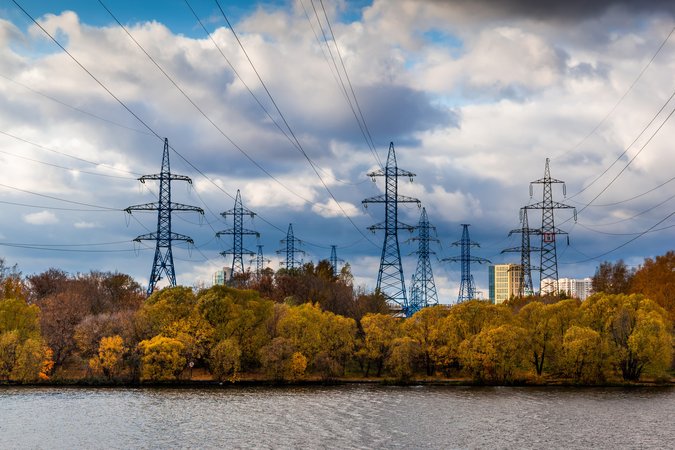Policies for Reducing the Impacts of Power Sector Air Pollution on Disadvantaged Americans
This working paper explores the air quality changes from various policies and their impact on disadvantaged Americans.
Abstract
Environmental policymakers in the United States are giving increasing attention to reducing the burden on Americans who face both environmental and economic disadvantages. This study considers an important part of the burden: the concentration of airborne fine particulate matter (PM2.5) due to emissions from the nation’s power sector. Using a highly detailed simulation model of the US power sector paired with a model of PM2.5 formation and dispersion, the study projects some of the environmental and economic effects of nationwide implementation of different policies to reduce power plants’ contributions to PM2.5 in environmentally overburdened, disadvantaged communities (EO DACs). Effects from reduced ground-level ozone also are addressed. Results are compared with a policy that is not geographically targeted—a national price on power sector carbon dioxide (CO2) emissions. In addition to the effects on EO DACs, we project the effects for all Americans, Black Americans, Hispanic Americans, Americans in the lowest income quintile, and Americans in highly environmentally burdened (not necessarily disadvantaged) areas. The national power sector CO2 emissions price is the most cost-effective policy for reducing premature mortality from PM2.5 exposure in EO DACs. The other policies, which are geographically targeted toward reducing burdens in EO DACs, have the unintended consequence of increasing PM2.5 exposure in some of those areas.
Executive Summary
Environmental policymakers in the United States are giving increasing attention to a longstanding concern: reducing the burden on Americans who face both environmental and economic disadvantages. Ample evidence indicates that environmental burdens fall disproportionately on many people of color and low-income people. These disparities raise fundamental questions of equity and justice that policymakers and researchers are trying to address.
This study considers a particular part of that environmental burden—disparities in premature mortality from exposure to airborne fine particulate matter (PM2.5) resulting from power sector emissions. Through simulation analysis, the study assesses the effects of several types of policies intended to improve the circumstances of people and communities facing environmental and economic disadvantages. The study assesses the health effects of the policies on certain disadvantaged communities and on different population groups at the national level, as well as on the population as a whole. It also assesses the costs of implementing the various policies, and their cost-effectiveness per death avoided by reducing PM2.5 concentrations.The model also accounts for the considerably smaller number of deaths avoided by the effects of policies in reducing ground level ozone. In our simulations, we implement each policy across the whole contiguous US.
Using a highly detailed simulation model of the power sector paired with a model of PM2.5 formation and dispersion, the study projects the environmental and economic effects of several policies that reduce ambient PM2.5 in geographic areas referred to as environmentally overburdened, disadvantaged communities (EO DACs). DACs are identified at the level of census tracts based on socioeconomic and environmental burdens, using the US government’s Climate and Economic Justice Screening Tool. EO DACs are DACs whose environmental quality is below average relative to nearby non disadvantaged communities. In addition to the effects for EO DACs and for society as a whole, we project the effects for Black Americans, Hispanic Americans, Americans in the lowest income quintile, and Americans in areas with a high environmental burden (whether those areas are otherwise disadvantaged or not).
Three of the targeted policies we simulate are designed to restrict power plants within EO DACs (“within-DAC policies”). They are loosely inspired by a 2022 New Jersey law, though we are not modeling all of the specific provisions of that legislation, and how it will be implemented is uncertain. Another targeted policy, which we call Upwind Limits, is designed to prevent any power plant from contributing more than a de minimis amount of pollution to any EO DAC. It is loosely inspired by a 2023 New York law, though again, we are not modeling all of the specific provisions of that legislation, and how it will be implemented is uncertain. For comparison, the study also analyzes the effects of a hypothetical $15-per-ton CO2 Pricing policy, which by its nature does not target EO DACs.
In our results, the Upwind Limits policy, CO2 Pricing policy, and best-performing within-DAC policies reduce per capita mortality across the country by approximately 1.4 to 1.5 times as much for EO DAC residents as for Americans living outside EO DACs. Thus, those policies reduce the PM2.5 mortality disparity between EO DAC residents and other Americans. The main reasons are that EO DACs have higher baseline PM2.5 concentrations, and some populations in EO DACs are known to be more sensitive to the harms of PM2.5 exposure. However, the targeted policies are, at best, only slightly more effective than the carbon price at targeting the PM2.5 reductions they cause in EO DACs.
The average per capita mortality reduction for Black Americans is 4.3 to 4.8 times the reduction for other Americans, for two reasons. Black Americans tend to live in areas with above-average PM2.5 from power plants (40 percent higher on average), and Black Americans experience a higher average mortality rate from a given PM2.5 exposure than other Americans.
The average national per capita mortality reduction for Hispanics as a group in the study is only 0.5 to 0.7 times the reduction for other Americans, mostly because Hispanics tend to live in areas with below-average PM2.5 from power plants (the emissions source type considered in this study), though their exposure to other PM2.5 sources is substantial. Our estimate of the per capita mortality risk reduction for Americans in the lowest income quintile is not significantly different from the reduction for the entire population. However, the estimate is based on using the same estimated exposure-response function across all income quintiles, since we could not find an estimate of how much more sensitive to PM2.5 Americans in the lowest income quintile are compared with other Americans.
The costs of the policies differ greatly. Counting deaths from both PM2.5 and ozone, the increased cost of supplying electricity per avoided death in the United States is $12 million for the best-performing within-DAC policy, $2.1 million for the Upwind Limits policy, and $0.6 million for the CO2 Pricing policy.
The CO2 Pricing policy also has a much higher ratio of estimated total health benefits and benefits from climate change mitigation relative to costs of policy implementation than the targeted measures. This is because it delivers significant co-benefits from local pollutant reductions in DAC and non-DAC areas. Also, unlike the policies targeted toward EO DACs, the CO2 Pricing policy does not create significant pollution hotspots.
Extensions of the study could provide additional insights. One extension would be to investigate the potential advantages of combining broadly applied, cost-effective measures, such as emissions pricing, with targeted policies to further reduce local harms in EO DACs. That research also would shed further light on the pros and cons of policies restricting emissions from having more than a de minimis effect on any EO DAC, versus policies focused on power plants within DACs.







